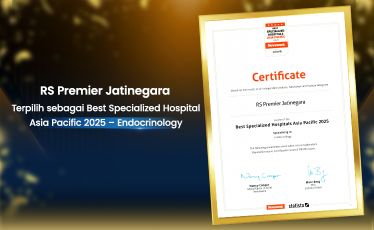+62 811-1300-9840
Getting to Know More About Monkey Pox: Symptoms, Treatment, and Causes
Oleh dr. Ario Perbowo Putra, Sp.PD-FINASIM
Dokter Spesialis Penyakit Dalam RS Premier Jatinegara
Lately, there has been a lot of discussion in cyberspace about the contagious virus "Monkey Pox". However, do Premier Friends really know what Monkey Pox is?
Monkey Pox
Monkey Pox is an infectious disease caused by the Monkey Pox Virus (a member of the Orthopoxvirus genus in the Poxviridae family). It was first discovered in 1958 in Denmark in the form of pox-like skin lesions in a monkey colony kept for research, hence the name Monkey Pox.
How is Monkey Pox Transmitted?
Transmission to humans occurs through direct contact with infected animals or humans, or through objects contaminated by the virus. The virus enters the body through injured or open skin, the respiratory tract, or mucous membranes (eyes, nose, mouth).
Invasion Phase and Eruption Phase in Monkey Pox
The Monkey Pox infection period is divided into 2 phases, namely the Invasion Phase and the Eruption Phase. Here's the explanation:
Symptoms of Monkey Pox in the Invasion Phase
The Invasion Phase is characterized by Prodromal symptoms such as fever, headache, lymphadenopathy, muscle pain, and fatigue. The Invasion Phase usually lasts for the first 5 days.
Symptoms of Monkey Pox in the Eruption Phase
The Eruption Phase is characterized by symptoms of rash, skin lesions (most on the face, followed by the soles of the feet & hands), red spots / macules, papules, vesicles, crusts, and finally the lesions fall off. The Eruption Phase usually lasts 1 to 3 days after the Invasion Phase.
How long do Monkey Pox symptoms last?
The incubation period for Monkey Pox disease is 6 - 13 days. The Invasion Phase lasts for the first 5 days, followed by the Eruption Phase which lasts 1 to 3 days after the Invasion Phase. Monkey Pox disease usually lasts for 2 to 4 weeks.
Treatment for Monkey Pox
Currently, monkeypox treatment still focuses on treating symptoms, such as fever and pain, using common medications. Adequate rest, nutritious food intake, and good hydration are essential to speed up the healing process. Self-isolation is also an important step to prevent transmission to others.
Although there is no specific treatment, prevention efforts continue to be carried out. A modified smallpox vaccine has shown great potential in preventing monkeypox. However, vaccine availability is still limited and priority is given to high-risk groups, such as health workers and people who have had close contact with sufferers. Mass vaccination is not currently recommended.
Monkey Pox Prevention for Travelers to Endemic Countries
Prevention of the risk of transmission from animals to humans can be done by avoiding physical contact with wild animals that have the potential to transmit monkeypox, such as primates and rodents. Do not consume undercooked game meat. Make sure the food and drinks consumed are hygienic. Always use complete PPE when handling animals or samples that have the potential to be contaminated.
Monkey Pox Prevention for Travelers to Non-Endemic Countries
To prevent the transmission of monkeypox from human to human, implement a clean and healthy lifestyle. Avoid direct physical contact with people who show symptoms of monkeypox, such as skin rashes. Use masks, gloves, and other PPE when caring for patients or cleaning contaminated areas.
Hopefully, information from dr. Ario Perbowo Putra, Sp.PD-FINASIM can increase our insight to always be vigilant in dealing with diseases that come, protect your loved ones by sharing useful information.
For information and to make an appointment with a doctor:
- Contact Centre: 1 500 908
- WhatsApp Chatbot Appointment: +62 8122 2309 911
| Loading data... |
|---|



















